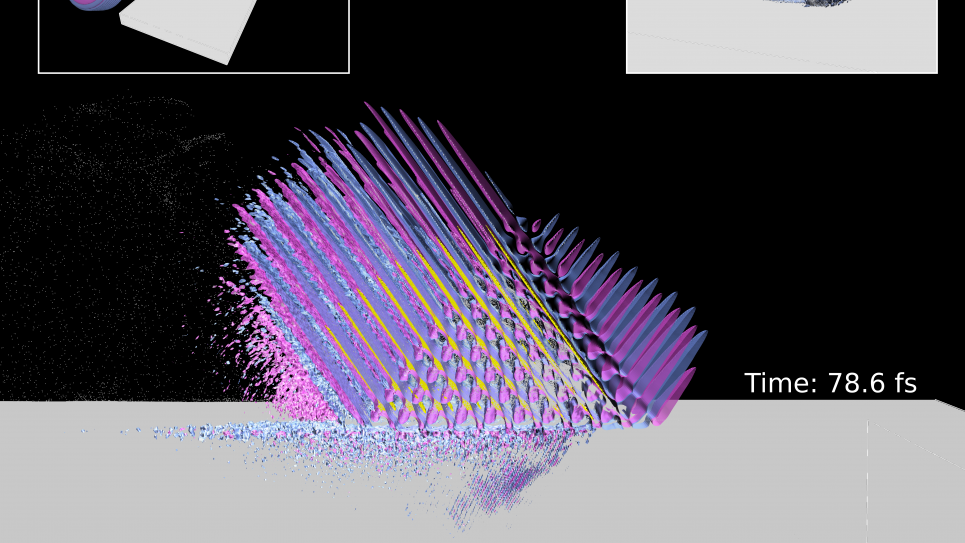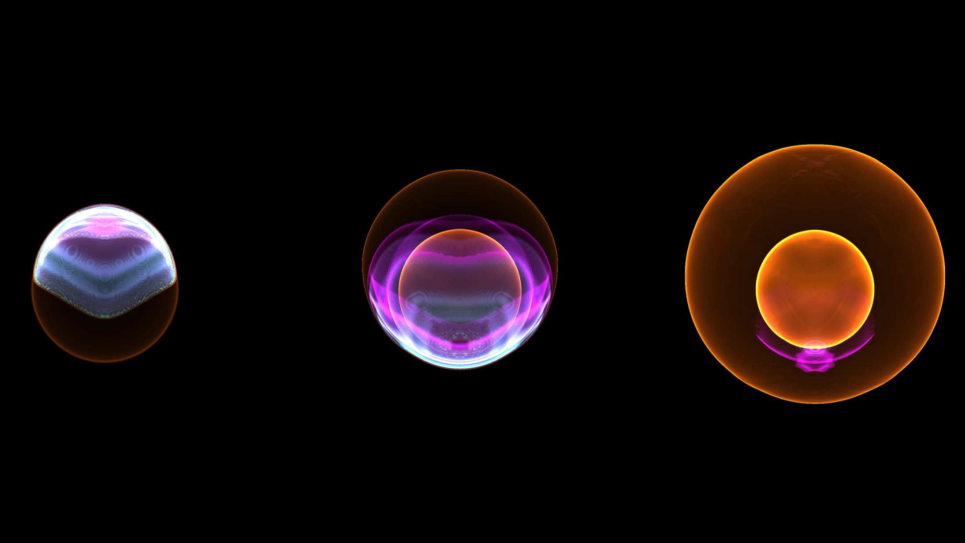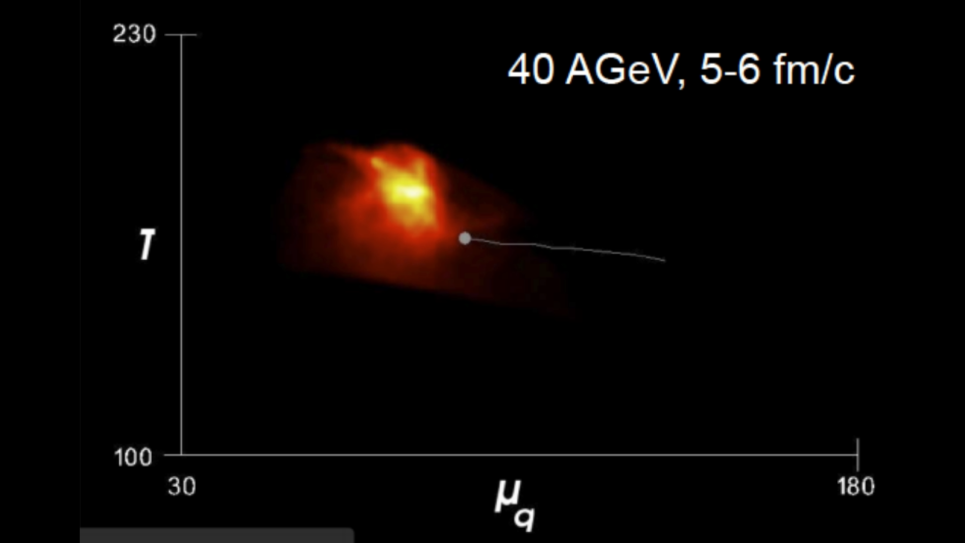
Interaction between an ultra-high intensity (>100TW) laser (dark blue grey/magenta) and a “plasma mirror” (grey): (top-left) incident laser propagatingtoward the plasma target; (center) non-linear reflection of the laser on the plasma mirror; (top-right) electric field after reflection on the plasma mirror. Thenon-linear reflection leads to a periodic distortion of the reflected field along with emission of relativistic electron bunches (white); The periodic distortion ofthe reflected field is associated to a bright harmonic spectrum corresponding to a train of attosecond (1as=1e-18s) pulses in the time domain (yellow). Image creditGuillaume Blaclard, CEA Saclay(France)/Lawrence Berkeley National Laboratory

